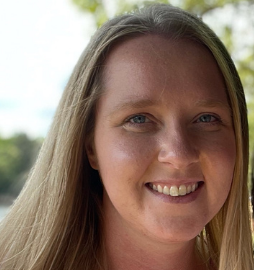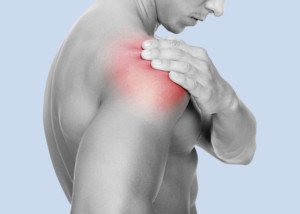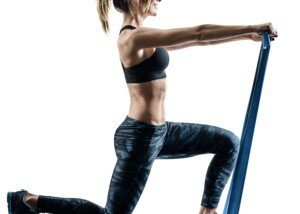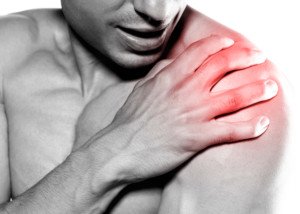Are you pretty sure you just suffered a grade I AC joint sprain but you can’t see the “bump” it’s supposed to have?
Is it possible you don’t have an AC joint sprain after all?
An AC joint sprain can occur if you fall on your shoulder or overdo an exercise with weights.
If you fall on your shoulder, you’ll feel the pain immediately if the acromion-clavicular joint was affected.
If you overdo a weightlifting exercise, you may not feel much discomfort there at the time of the workout or even later that day, other than what feels like having “worked the area really hard.”
But next day, you’ll feel intense soreness and won’t be able to lift the hand on that side over your head without considerable discomfort.
Lifting Weights and a Grade I AC Joint Strain
Let’s focus on strength training because this is a common cause of AC joint injuries – many of which are grade I.
In this mildest form of the injury, there’s only partial damage to the AC ligament and joint capsule. There’s no separation. The ligament, though, has been overstretched.
The area can really hurt, too: a soreness that goes much deeper than the typical soreness that follows a grueling muscle building routine.
The area is super tender and also stiff, and you pretty much feel this even at rest with the shoulder and arm perfectly still.
You avoid any overhead motions and even try to avoid partial overhead motions such as putting your hair in a ponytail.
You figure that within a week, though, you should be good to go. In fact, for AC grade I sprains, return to sport or workouts can usually be achieved within three weeks.
In the meantime, you may be searching for the tell-tale sign of an AC joint sprain: a bump towards the end of the collarbone.
You don’t see one. This makes you wonder if your AC ligament was even damaged. Maybe instead you just have a strained muscle?
Of course, a strained muscle sounds less ominous than an overstretched ligament, because mildly damaged muscle heals faster than does a mildly damaged ligament.
“A grade 1 AC joint sprain will not always have a visible bump, because there is not a complete rupture of the ligament with a grade 1 injury,” says Dr. Megan McLain, PT, DPT, cofounder of Intuitive Choice Physical Therapy & Wellness in Atlanta, GA.
“There is likely to be some localized swelling and a ‘bump’ at the time of injury, but this should resolve over time.”
Nevertheless, you can’t rule out ligament damage just because you don’t see any bump.
The less body fat you have, the more likely you’d see a small bump.
It’s possible a bump is there, obscured from view, if you have enough subcutaneous fat in the area.
“A grade II or III strain will have more of a bump, because the acromion separates more from the clavicle,” says Dr. McLain.
• Rest the joint. Do not attempt to “work through it” at your next trip to the gym.
• Avoid overhead or partially overhead motions around the house.
• If avoidance means skipping washing your hair, then skip it.
• Listen to your body. Give the joint rest.
• Gradually return to sport or exercise, avoiding anything that incites pain.
Great Rehab Exercise for a Grade I AC Joint Sprain
Once the joint simmers down a bit after several days, you’ll want to do nine sets of 12 to 15 repetitions of rows using a tension band and also a cable resistance machine.
Hopefully you’ll have access to the machine, and the bands can be purchased online.
The tension needs to be light, such as what the green band offers (the bands are typically color coded, with green being on the lighter part of the tension continuum).
With the cable machine, set the weight to 30 pounds.
With either implement, pull the handles towards your torso – but go ONLY as far as the injured side will allow.
Do not force going past that point. Be gentle.

Shutterstock/Aaron Amat
• Three sets should be with both palms up.
• Three sets with palms facing each other.
• Three sets with palms facing down.
• One minute in between each set.
• Ideally you’ll want to use both the band and cable (band when at home; cable when at the gym).
• Each day you should be able to pull back just a little bit further and feel things loosening up.

Freepik.com/yanalya.
This exercise will aid in restoring fuller range of motion with less discomfort and stiffness.
If it has not helped, though, you may actually have a more severe injury and should seek a medical evaluation.
 Dr. Megan McLain, PT, DPT, puts her clients first while providing one-on-one in-home care. With physical therapy and health coaching services, Dr. McLain addresses all aspects such as physical barriers, mindset, accountability and knowledge that may be impacting the client’s experience.
Dr. Megan McLain, PT, DPT, puts her clients first while providing one-on-one in-home care. With physical therapy and health coaching services, Dr. McLain addresses all aspects such as physical barriers, mindset, accountability and knowledge that may be impacting the client’s experience.
 Lorra Garrick is a former personal trainer certified by the American Council on Exercise. At Bally Total Fitness she trained clients of all ages for fat loss, muscle building, fitness and improved health.
Lorra Garrick is a former personal trainer certified by the American Council on Exercise. At Bally Total Fitness she trained clients of all ages for fat loss, muscle building, fitness and improved health.
.



























